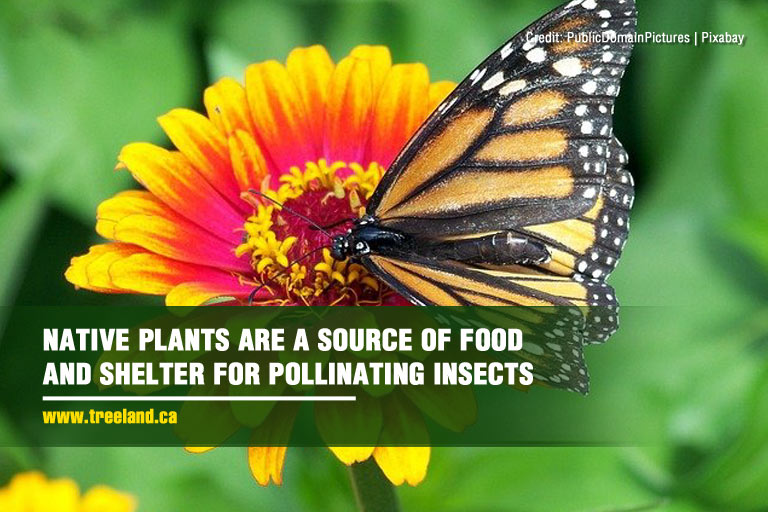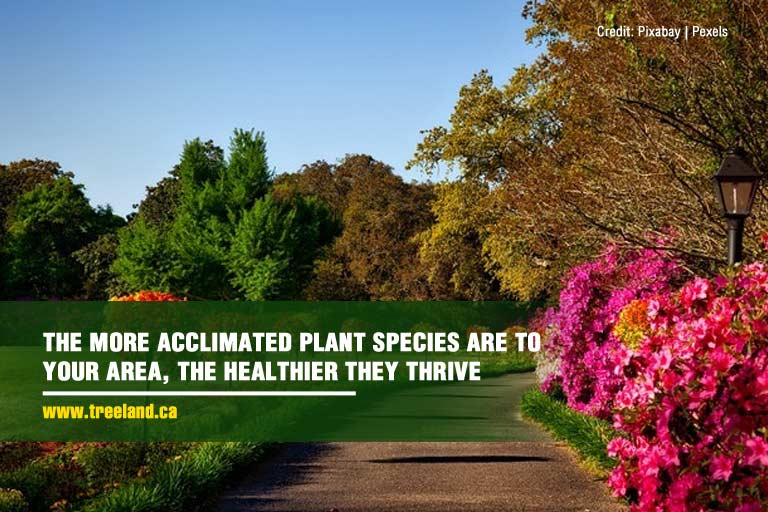It is easy to take our native Canadian plants for granted, considering we see them every day. You may think that these plants are less interesting or exotic, but Canada is home to approximately 17,000 identified species of trees, flowers, herbs, ferns, mosses and other flora.
These beautiful native plants play a crucial role in maintaining Canada’s delicate ecosystem. In celebration of Canada Day, get to know more about our native plant species and how to grow them in your own garden.
What Makes a Plant “Native” to Your Area?

When you’re looking around your garden, do you sometimes wonder where some of the plants that “magically” appeared came from? If you’ve seen these tiny humble shrubs grow without your knowledge, chances are, these plants are native to your area.
By the name itself, native plants are those that grow naturally without any human intervention. They are uniquely adapted to local environmental conditions and help the environment the most when planted in places that match their growing requirements. Native plants will thrive in the soils, moisture, and weather of your region. High-quality native plants can even require less water and maintenance, and support sustainability.
What Are the Benefits of Choosing Native Plants?
While we can always rely on nature to do its part in beautifying our surroundings, you also have the choice to facilitate their continued growth by including or even prioritizing them in your gardens or landscapes.
Having native plants is beneficial for your garden because of their inherent adaptation to the climate, soil, conditions, and native species. So if you’re in Ontario, your native plants, including trees and flowers, will have no problem growing healthy because they are accustomed to the soil and temperature of the region.
Whether it’s plants that grow in shade, shrubs, or perennials, native plants are important for your garden. Here are 4 benefits of choosing native plants:

- Native plants support the needs of local wildlife
If you want to make your garden in Ontario sustainable, planting well-selected native Ontario plants can help conserve water and even create a habitat for local wildlife. By planting native plants on a landscape or garden, or putting up a native plant nursery, you can give it a natural look of local Ontario beauty. These plants attract insects which play an important role in the pollination process and allow your gardens to flourish.
- They grow in your soil naturally
Native plants grow in your soil naturally, and they are adapted to the local climate and soil conditions where they naturally occur. And because they grow in your soil naturally, they do not require fertilizers and require fewer pesticides.

- Native plants require less care
While they don’t need much attention, they beautify the landscape as much as rare plant species that need more care do. While not all native garden plants in Ontario are easy to maintain, most of them are. When these native plants are provided with the right environment for adaptation, they can thrive with little to no help or resources.
- Native plants act as a source of seeds so they continually populate the area
The seeds of native plants are spread with the help of wind, water and wildlife. This way, they continue to populate landscapes, like your local parkland, trail right-of-ways, and conservation areas.
What Plants Are Native to Canada?

Canada’s native plant species are as varied as the climate all over the country. Climate conditions have a say on how cold or hot the air is in a particular area, as well as the quality of the soil where the plants grow. That said, it’s safe to say that what you find in Ontario may not grow in British Columbia.
- Paper Birch – The paper birch tree, also known as canoe birch or white birch, covers the map of Canada. This tree does not do very well in heat and humidity, but give it a harsh winter, and you will see it flourish.
- Western Red Cedar – Also called the Giant Cedar, this is a tree found on the West Coast of Canada. You won’t find it anywhere else in the country because it relies greatly on water to survive.
- White Spruce – This species covers most of Canada with its beautiful short needles. It is one of the trees most commonly found in Canada, even growing all the way into the Mackenzie Delta. It is known for having a very complex root system and can weather droughts well.
- Red Oak – The Red Oak is the provincial tree of Prince Edward Island. You can only find these tall trees in a small swath of lower Eastern Canada.
- Sugar Maple – Sugar Maple is native to Ontario and Quebec and is one of ten maple species in Canada. The Sugar Maple is one of the largest Maples in Canada and produces the distinct leaf that is found on Canada’s flag. In the spring, many people harvest its sap for syrup and sugar. Because of this, the sugar maple is one of the trees people are planting in Canada.
- American Ginseng – This is a herbaceous perennial plant native to eastern North America. These plants, which grow in shade, are mostly found in the province of Ontario.
- Red Bearberry – A dwarf prostrate shrub, the red bearberry can be found in northern Quebec. The red bearberry does well in partial shades of forest canopies.
- Nodding Trillium – The nodding trillium is a herbaceous perennial plant that grows from an underground rhizome into one or more unbranched stems of 15 to 60 centimetres, and is found in Hudson Bay, Ontario, Canada.
- Okanagan Sunflower – Although officially named Arrowleaf Balsamroot, the locals of Kelowna, British Columbia call it the Okanagan sunflower for its appearance. Most of the plant is edible, although most who have eaten it agree that it does not taste good. First Nations peoples use it extensively as food and medicine.
- Labrador Tea – This is a type of rhododendron shrub that’s common to the forests of Alberta. It thrives in wet, boggy areas, and makes a beautiful ornamental shrub in the right conditions.
How Do I Select the Right Plant for My Property?

Before planting any native plants and trees in your garden, ask yourself the following questions:
- Will the plant grow in this environment?
- How big will this plant grow under ideal circumstances?
- How much shade does it need?
- When does this species ideally bloom? (for flowering plants)
- How resistant is this species to disease and parasites without the aid of pesticides?
- How much maintenance does this plant need? For landscaping trees, where do I get tree services in my area?
If you are not sure which plant is indeed native to your area, do not hesitate to seek help from authorities. They have better understanding and knowledge on determining which plants are native to your place, and if planting native trees in forests near you is possible. Organizations such as CanPlant, Canadian Wildlife Federation, and Ontario Nature actively participate in these activities.
See You in Our Tree Farm!
Caledon Treeland offers a wide selection of privacy and shade trees to suit your landscaping needs! We help you determine which species grow best in Southern and Central Ontario. Call us via (905) 880-1828 to schedule an appointment to visit our tree farm.

